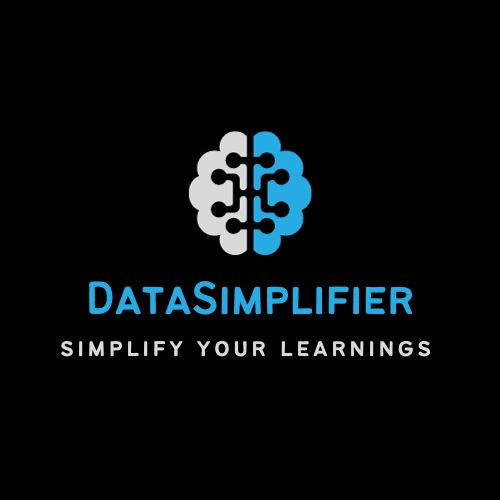Introduction
Hey Indian, future AI, ML & Data Science experts! Are you overwhelmed by the statistics behind AI? Statistical analysis is essential in machine learning models, but are you struggling to understand how? Fear not! So this is your all-in-one guide to statistical methods in AI, from the basics to more complex ones.

Statistical learning methods in AI are distributed: we are going deep on what they are, how they underpin all AI models, and how to make AI interview interviewing easy. From mastering key statistical techniques that will wow recruiters to improving your AI job prospects, this complete guide is brimming with all the practical knowledge you need. Join us to discover the importance of statistical analysis in Artificial Intelligence, examine its relevance across diverse applications, and to prepare yourself with the knowledge required to thrive. We’ll also offer practical tips for putting these principles into action in your job search.
Statistical reasoning is one of the fundamental pillars of AI, it supports our understanding in interpreting events happening behind complex methods. Data is part and parcel with designing machine learning model, optimizing algorithms and enhancing decision-making. This article is your ultimate guide to mastering statistical learning methods in AI, whether you are a student or a working professional.

The success of machine learning in AI is intertwined with its statistics followed by a firm understanding statistics to form a lasting career in AI. From analyzing model performance to understand data distributions, statistical tools are fundamental for any aspiring AI professional. But what are these statistical methods? What are they and how do they assist in resolving issues pertaining to AI? This guide is going to cover everything you need to know about AI to thrive in any data or machine learning role – from a junior data analyst to a much more senior machine learning engineer.
In this guide, we will analyze essential statistical techniques in AI while offering simple explanations and real world examples to easily understand complicated concepts. From the foundation of probability concepts to more advanced statistical learning techniques, we are ready. The content is always to the point, uses no academic jargon and is only here to help you do the best in your interviews and advance your AI career.
The Role of Statistics in AI
Statistics is the basis of AI as it enables models to understand, interpret, and predict information. Statistical principles is how we use a lot of AI applications for:
- Feeding records into algorithms, applying data preprocessing techniques first.
- Model evaluation — Statistically testing performance
- Pattern recognition – Finding patterns and trends in data
- Probabilistic reasoning — maintaining uncertainty in AI models
AI systems independently analyze and interpret their incoming data to derive valuable insights and improve decision-making processes across sectors using statistical methods.

Statistical Methods in AI
Here are a few core statistical concepts you need to know to understand AI and machine learning:
A. Descriptive Statistics
These techniques include summarizing and characterizing data. Important measures include:
- Mean (Average) — Central tendency in data
- Median – Represents the middle value of a sorted data set
- Mode – Value that appears the most
- Variance & Standard Deviation – Spread or dispersion of data
B. Inferential Statistics
This is why AI models can make inferences based on samples using inferential statistics. Key concepts include:
- Hypothesis Testing – Tests if an assumption about data is correct
- Confidence Intervals — Gives a range for estimation of parameter
- p-values — A measure of statistical significance in hypothesis testing
Probability Theory in AI
It is something so critical in AI, which is quantifying the uncertainty using probability. AI models predict outcomes and deal with missing data through the lens of probability. Key concepts of probability include:
- Bayes’ Theorem — The core of Bayesian inference and Naïve Bayes classifiers
- Conditional Probability – How likely is one event given the other event
- Markov Chains – Used in natural language processing (NLP) and reinforcement learning
- Monte Carlo Methods — Assists in simulations and with the probabilistic model
Statistical Learning Algorithms in AI
Statistical Learning is the math that connects classical statistics to machine learning by giving the mathematical tools we need to train and predict models. Statistical learning methods include but are not limited to:
A. Regression Analysis
Regression — This is used for predicting values. Common types include:
- Linear Regression – Models relationships between input and output variables
- Logistic Regression – Applicable for binary classification problems (e.g., spam detection)
- Polynomial Regression – Captures non-linear relationships between variables
B. Classification Algorithms
Beyond that, we also have classification techniques, which are used to divide pieces of data into distinct groups. Some popular classification methods are:
- Naïve Bayes Classifier – Based on Bayes’ Theorem, commonly used in NLP
- Support Vector Machines (SVM) – Divides data points using a hyperplane
- Decision Trees – A decision-making structure similar to a tree
C. Clustering Techniques
Clustering is an unsupervised learning approach for clustering data points. Common algorithms include:
- K-Means Clustering – Groups data into K clusters based on similarity
- Hierarchical Clustering – Creates a hierarchy of clusters with a tree structure
Statistical Tools Used in AI
There are a few statistical tools that AI professionals utilize to visualize data and perform data analysis efficiently:
- Pandas – Python Data Analysis Library
- NumPy — For mathematical and statistical operations
- Scikit-learn — Machine learning algorithms and statistical models
- SciPy — Advanced statistical functions and optimization methods
- Matplotlib & Seaborn – Data visualization libraries
These tools enable you to analyze the data, train the models, and construct AI applications efficiently.
Statistical Analysis in AI and Real-Life Examples
Statistics plays a crucial role in almost all types of AI applications:
- Predicting diseases using logistic regression – Healthcare AI
- Financial — Risk analysis through statistical models
- Clustering techniques for customer segmentation in e-commerce
- NLP Sentiment analysis using Naïve Bayes
- Computer Vision — A statistical learning-based image recognition
Familiarity with these applications will enhance your AI prowess and put you ahead in interviews.

Conclusion
And with that, you’re done with this complete guide to statistical methods in AI! We hope you learned something new and now have a good understanding of what statistical analysis means to AI. Because this is a journey that takes lots and lots of learning and practice. Continue learning new things and applying your learnings to the real world. In short, the more you practice, the more confident you will become in addressing the obstacles related to AI and ML.
Here is the group of job notifications and you can find many opportunities in one place – Telegram Group
As you take a step in your AI career journey, remember that these methods will forever remain at the core of data-driven decision-making. Understanding these approaches will not only allow you to clear interview rounds of job roles but also empower you to make meaningful contributions to practical AI projects. Statistical analysis is an important part of all these, whether it be in predicting customer behavior, business process optimization, or deep learning development.
This all-inclusive guide provides the necessary roadmap towards success in the rapidly evolving world of AI. Now you’re equipped with the know-how that can hold recruiters to the table and leave your mark in the fiercely competitive AI job market. Stay updated with recent technology trends by pursuing online internships, community meetups, and workshops.
GET INVITE TO OUR PREMIUM GROUP WHERE YOU CAN MEET EXPERTS IN YOUR DOMAIN
MASTER-TIME SERIES FORECASTING


1 thought on “Statistical Methods in AI | Best Guide for Statistical Analysus”